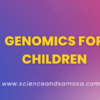The Journey of Motherhood

What is it to be like a mother….Every women who has traveled this journey would agree that they are no longer the same women after pregnancy – physically and emotionally. Pregnancy lasts an average of 266 days (38 weeks) and leaves a lasting imprint. An in depth awareness about this journey would for sure equip women wishing to be mothers and would make women who are already mothers respect their body and health and make them feel more happy and empowered. Also an understanding about what happens in majority of women would help one to seek help when needed.
A woman is going to carry a life form for whole nine months. it’s a remarkable journey. Body undergoes many obvious and subtle changes. These changes are needed to support the fetal development and prime the mother towards labor. Ribcage will widen, tummy will stretch, and organs will shift around to make room for your growing uterus.
Breast Changes: Cup size to Color to Colostrum release
Breasts may start to grow as early as week six, and will continue till the end of the pregnancy. Most women find that their bra size increases at least a cup size during first pregnancy. An increased supply of blood to the breasts along with the quick growth of milk ducts would make breast more tender and sometimes pain develops. By third trimester Colostrum, a watery pre-milk, may leak from nipples. Hormonal changes during pregnancy also shape nipples so that baby can more easily latch on.
Skin changes: Glow to acne to stretch marks
During pregnancy it’s not all rosy glow as you see in movies. Acne, stretch marks, rashes etc can also happen. Most pregnant women get stretch marks on their belly and even on their breasts, hips, and buttocks. They appear as red, brown, or even purple. In nearly 50% of pregnant women dark spots appear on face on forehead and cheeks and are a result of increased pigmentation, officially known as chloasma or melasma gravidarum
Respiratory System: Respiratory rate Rises
Breathlessness is commonly reported by 70% of healthy pregnant women, starting from the very first trimester of gestation. Oxygen consumption increases in response to the needs of the growing foetus. During labour, oxygen consumption increases to about 60% as a result of the exaggerated cardiac and respiratory work load.
Cardiovascular system: Blood flow to various organs increases
Blood flow to various organs increases during pregnancy to meet the increased metabolic needs of tissues. Venous return and cardiac output increases dramatically during pregnancy. Cardiac output gradually increases during the first 2 trimesters with the largest increase occurring by 16 weeks of gestation. Mean Blood Pressure gradually falls during pregnancy. BP then rises during the mid-third trimester to levels approaching pre-pregnancy BP values.
Abdomen changes: Grow, Grow and Grow
The growing uterus stretches the muscles in the abdomen during pregnancy. Enlarged uterus extends to the level of the navel by 20 weeks and to the lower edge of the rib cage by 36 weeks. Changes that occur during pregnancy may take months to revert to normal. Loss of abdominal muscle tone and weight gain can last for many years after birth.
Gastrointestinal system: Nausea, Vomiting, Constipation
Increase in estrogen and human chorionic gonadotropin, two hormones that help maintain the pregnancy, induces nausea and vomiting. Growing uterus causes displacement of stomach and intestines. At full term the stomach attains vertical position rather than its normal horizontal one. These changes lead to increased intragastric pressures as well as a change in the angle of the gastroesophageal junction, which in turn tends toward greater oesophageal reflux. Constipation is a common complaint of pregnant women secondary to the physiologic changes that accompany normal gestation. Some women even develop pica (craving for non-food like chalk, ice, baking soda and dirt )!
Urinary system changes: Leaking urine and Urinary infection
The length of the kidneys increases by 1 to 1.5 cm during pregnancy and decreases in size over a period of 6 months postpartum. Under the influence of the hormone progesterone, the kidneys and the ureters dilate. This can reduce the flow of urine and increase the risk of urinary infection in pregnancy.
Leaking urine during pregnancy is embarrassing but very common during pregnancy and usually goes away as the body heals after giving birth. This happens because during pregnancy, the expanding uterus puts pressure on the bladder. Urine leak out of the bladder when additional pressure is exerted while coughing or sneezing.
Musculoskeletal changes: Lordosis to Pelvic pain
The effect of pregnancy on the musculoskeletal system results in modifications of the posture of women, which can impair their everyday tasks and increase the risk of falls. The rapid weight gain during pregnancy dramatically increases the amount of stress on joints like the hips and knees and lead to joint pains and cause difficulty in walking, sleeping etc. Lordosis – an exaggerated curve in lower back can contribute to the high prevalence (50%) of lower back pain in pregnant women. Pelvic pain is common during and after pregnancy. This is in part due to increased laxity of the ligaments around the pelvis, in the pubic symphysis and around the sacro-iliac joints (SI joints).
Endocrine system changes: the rise of Hormones
Estrogen concentration rises dramatically in the first trimester and remains above normal until delivery. Progesterone concentration during pregnancy also rises sharply in the first trimester and remains elevated until delivery. Cortisol concentration also increases, with a progressive rise throughout the pregnancy as a result of decreased cortisol clearance. The rapid increase in estrogen levels during the first trimester may cause some of the nausea associated with pregnancy and, during the second trimester, plays a major role in the milk duct development that enlarges the breasts.
“To be pregnant is to be vitally alive, thoroughly woman, and distressingly inhabited. Soul and spirit are stretched – along with body – making pregnancy a time of transition, growth, and profound beginnings.”
Giving birth is a great adventure which only a woman can experience. From head to toe you become a completely new person-anatomically, physiologically and emotionally. All those women, who are yet to start this journey—go ahead and enjoy this roller coaster ride and all those mother’s out there, read it, feel happy and strong that you have been through a long journey and sit back and enjoy your time with your wonderful creation.












Interesting article! I love the scientific angle you used to explain the changes that happen.
Thank you Devon
That’s alot of changes! No wonder our emotions feel out of control sometimes. But it’s an awesome experience to have children and I wouldn’t trade it for anything!
Thank you. An understanding about our body makes us more strong in dealing with changes, physically and emotionally
All the changes, both physically and emotionally can certainly be hard to manage sometimes.
As someone who’s currently expecting, this post is very relevant to me right now! There are so many changes that happen during pregnancy, and it’s amazing that each woman’s experience is unique. Looking forward to seeing what motherhood brings!
Thank you Meg. Happy to that you found the content informative
Whew, it is truly amazing and wonderful. I love being a mom, too and wouldn’t trade it for anything. 🙂
What a wonderful post! and all these scientific facts that you include are all new to me,, thanks for sharing 🙂
Thank you KuminKueche
Great info. After my first baby, my gastrointestinal areas were never the same again. I like to tease him that he’s the reason Mama can’t eat peppers! Thanks for an interesting read. 🙂
Thank you Sherry. Happy that you liked my piece of writing
Very informative post. All expecting women should read an article like this!
Thank you James
Great article, explained very scientifically
Being a mom is truly transformational. A very informative post
What a journey being pregnant is. Loved your scientific take – mums need to be aware of the whats and the whys of the changes they are going through.
This is a good remembrance post – how tough that time was..phew.. body changes and give us all the hints – dude life is not going to be a cakewalk now on, but we were go engrossed in – oh my little baby gonna come soon notion that all these signs go down the drain 😉 when this little baby turns into little devil – no warnings.
Love the post – all the details a just got the news mom must read.
Women undergo so many things during pregnancy and your post made me remember everything when I was expecting. Thanks for linking up with #MMM
Thank you Deepa for stopping by
Being pregnant and giving birth is like being reborn.Its really precious.Very detailed post about the motherhood journey.Thank you for writing with us for #MondayMommyMoments
Thank you Amrita for stopping by
Definitely helped me appreciate the miracle that my body is a lot more.